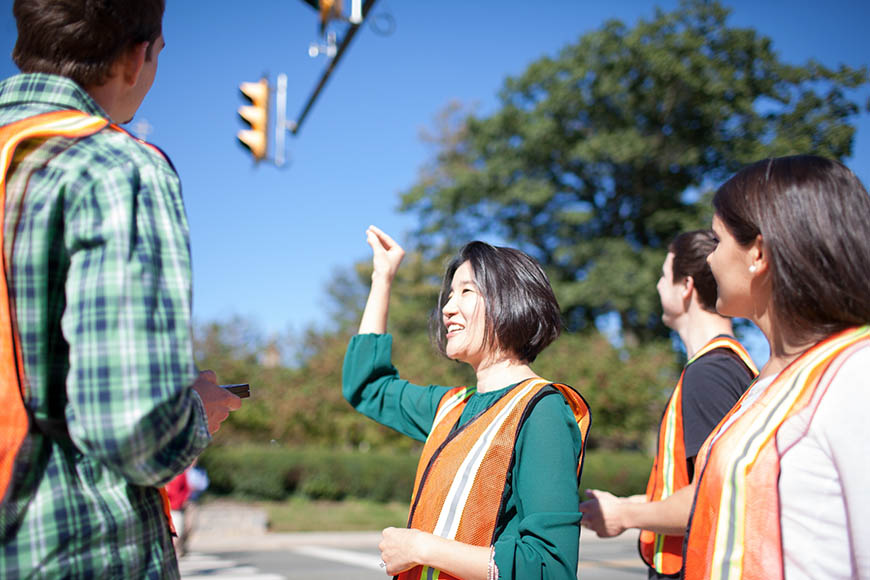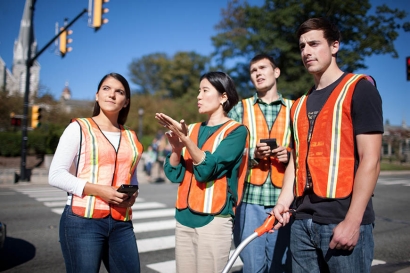Engineering Transportation Solutions through the Eyes of a Child

Who: Clare Boothe Luce Associate Professor of Civil and Environmental Engineering Seri Park, PhD, PTP, a transportation engineer with a focus on operation, control and design
What: Investigating children’s whole-body response to vehicle-pedestrian interactions to help public agencies and vehicle manufacturers make informed decisions on appropriate safety prevention devices and measures.
Background: In June 2018, in less than one week’s time, two Philadelphia children were struck by cars—one survived; the other didn’t. “Everything about our roadways and vehicles is designed for adults, not children,” explains Dr. Park. Vehicular accidents are the second leading cause of death for children. According to the National Highway Transportation Safety Administration’s 2015 crash data review, fatalities per age group indicates that approximately 21 percent of children ages 14 and younger killed in traffic crashes were pedestrians.
Collaboration: Dr. Park has teamed with Aditya Belwadi, PhD, a research scientist in the Center for Injury Research and Prevention at the Children’s Hospital of Philadelphia. Dr. Belwadi is an expert in injury biomechanics, injury causation and the effectiveness of safety products for children.

Virtual Reality Research: “While some studies have used virtual reality devices to gauge children’s reactions while crossing the streets, reports acknowledge limitations in collecting their actual behavior patterns,” notes Dr. Park. What will set this research apart is Villanova’s CAVE Automatic Virtual Environment, which provides participants with an immersive experience interacting with 3-D virtual-reality worlds, which in this case, will include diverse roadway environments. Edmond J. Dougherty ’69 EE, ’86 MSCS, assistant professor of Electrical and Computer Engineering, will lend his video data collection expertise to help develop a variety of traffic scenarios and roadway conditions for which children’s reactions and perception levels can be measured.
The study: Two key variables in children’s pedestrian safety will be considered: physical height and level of attentiveness.
- A variety of height categories will be applied when rendering the environment for the CAVE so that visual perception levels can be assessed accurately.
- Various scenarios will be designed to fully capture pedestrians’ behavior patterns based on level of attentiveness (i.e., fully attentive or distracted by a smart phone, listening to music, etc.).
- Each participant will have an eye-tracker to gather response levels to simulated risks.
Undergraduate Involvement: Assisting with the project’s data collection and analysis is Civil and Environmental Engineering senior Robert Fralinger who appreciates the hands-on experience. “Working with Dr. Park has provided an opportunity to interact with a faculty member in a new way. To have discussions and assignments involving real-world scenarios is exciting.”
Dr. Park's Passion: As a parent and ardent child advocate, Dr. Park’s enthusiasm for the research is palpable. “Understanding the children’s perceptions and reaction levels under various built-in environment conditions will be crucial in developing proper measures and devices to enhance their safety.” As the latest vehicles, particularly autonomous vehicles, take to the streets, this research can provide essential information to support the pedestrian detecting systems/algorithms embedded within them. She says, “I am hopeful that our research on children’s behavior will be a stepping stone that leads to significant change.”
